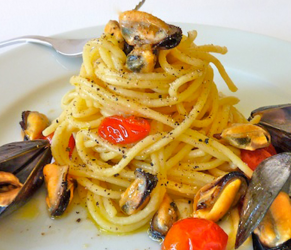Stuffed vegetables have always occupied a prominent place within Eastern Aegean culinary tradition. Throughout Greece's history, chefs and grandmother's alike have shown a penchant for stuffing various foods, usually then wrapping them in caul fat, fig leaves or vine leaves.
Today, vegetables account for most of the stuffed dishes that can be found within the Greek kitchen. All sorts of stuffed vegetables are relished, and every season has its specialty. Although cabbage leaves and whole large onions lend themselves to stuffing when the weather turns cold, summertime vegetables are by far the most popular. Come June, markets explode with a virtual rainbow of stuffable vegetables: mainly large beefy tomatoes, bell peppers, zucchini, and eggplants. Later in the summer, horn-shaped red peppers arrive on the scene, another vegetable that can be stuffed. Regardless of the specific vegetable type that has been stuffed, the dish is referred to by the general term "yemista" (stuffed).
Varieties of Stuffings
There are two basic versions of yemista, with meat and without. Generally, the meat (usually ground beef or lamb) is combined with rice.
Meatless versions of the dish are sometimes referred to as "yialantzi." The pulp, in the case of tomatoes, zucchini and eggplants, is usually combined with rice, onions and herbs such as mint and parsley. Raisins and pine nuts often enhance the filling. Traditionally, the variety of rice used is a short-grain polished rice called "nihaki," which is softer and stickier than medium or long-grain rice when it is cooked. Greeks prefer that softness to the tough texture of long-grain rice, the grains of which stay separated and intact during cooking. In recent years, though, long grain rice, even basmati, has found its way into the stuffing. Often, thick, strained Greek yogurt or pungent feta is served as an accompaniment.
There are other kinds of fillings too, of course. In Crete, for example, bulgur wheat often replaces rice. In other parts of the country, trahana, a granular buttermilk pasta, is preferred. Sometimes short pasta is used, too, and cheese has become a common filler, especially for certain varieties of peppers and in small tomatoes. In restaurants, stuffed vegetables are a kind of carte blanche for the chef, and these days one will encounter every possible combination.



































































